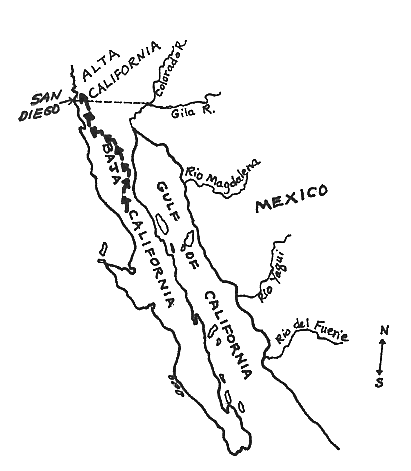| ||||
|
| ||||
|
JUNIPERO
SERRA
and the Sacred Expedition
 Lived:
1713-1784
Lived:
1713-1784
Explored California in: 1769-1784
Exploring for: Spain
Explored: by land from San Diego to San Francisco
Father Serra was the spiritual leader of the Sacred Expedition, the first Spanish attempt to found a settlement in Alta (Upper) California.
EARLY HISTORY
Junípero Serra was born on November 24, 1713, in the town of Petra on the Spanish island of Majorca, in the Mediterranean Sea. His name was Miguel José Serra until he became a Franciscan priest in 1730 and took the name of Junípero. The Franciscans were a Roman Catholic religious order founded by St. Francis of Assisi in 1209.
After 15 years of teaching philosophy
at Lullian University in Palma on Majorca, Serra
went to New Spain (
BACKGROUND
For over 150 years, since Vizcaíno’s
exploration in 1602,
King Charles II of
Gálvez planned carefully. This expedition would be well-equipped. Portolá volunteered to be the commander-in-chief. There would be four groups, two going by land and two by sea, plus a third ship with extra provisions.
THE SACRED EXPEDITION
The first ship, the San Carlos, left from La Paz in Baja California on January 9, 1769, with 62 men. The captain was Vicente Vila. With him were Lt. Pedro Fages and 25 soldiers, mapmaker Miguel Costansó, Father Fernando Parrón, an engineer and an army surgeon.
The second ship, the San Antonio, left on February 15, 1769. It was captained by Juan Pérez and had a crew of 28 men plus two priests. Both the San Carlos and the San Antonio were wooden sailing ships, each 72 feet long. The captains of both ships had the maps made by Vizcaíno, but some errors on those maps proved disastrous for the sea expedition.
The first of the two land groups left Velicatá on March 24, 1769. Led by Captain Fernando Rivera y Moncada, this group had 25 soldiers, Father Juan Crespí, and 42 Christian Indians from Baja California. Father Crespí’s diary is a main source of information about the Sacred Expedition.
Last to leave, on May 15, 1769, were Portolá, Father Serra, eleven soldiers, five muleteers, and twelve Christian Indians. With the land groups were 200 cattle plus 163 mules and some horses. Their provisions included dried meat, grain, flour, cornmeal, and dry biscuits.
Those who went by land had a 250-mile trip across the desert of Baja California. It was a rough journey. As they got further north, there were more trees and water.
In 1749 Father Serra had been bitten on the leg by a snake or insect, and the wound had never healed. Now walking was painful for him. At one point Portolá urged him not to go any further, but Serra said he would prefer to die on the trip rather than turn back. An often-quoted story tells how Serra asked one of the men who tended the mules to treat his wound the way the muleteer would treat a wound on a mule’s leg. The muleteer did so, and Serra’s leg got much better.
Serra’s group came within sight of San Diego Bay at the end of June. Captain Rivera’s group had arrived on May 14. It had been an exhausting trip by land, and they were happy to see the two ships waiting for them in the harbor there.
Sadly, those on the ships had
endured a much worse trip than the land groups. They had sailed against strong
winds. Their maps gave an incorrect latitude for
San Diego Bay, taking them far out of their way. The San Carlos was
at sea for 110 days. The San Antonio’s trip took 54 days. The small
supply ship had turned back to
By the time they finally found San Diego Bay, the crews were suffering from scurvy. On the San Carlos, 24 of the crew of 26 had died. Except for the two priests, everyone aboard the San Antonio was sick. Of about 300 men who left Baja California on the Sacred Expedition, only about half survived to reach San Diego. Many more were sick and died of scurvy in San Diego.
Despite the sickness, the men raised the Spanish flag at the site they chose for a presidio (fort). Father Serra erected a cross and proclaimed the founding of the first mission in Alta California.
WHAT SERRA ACCOMPLISHED
Spanish settlement of Alta California (which became the State of California) began with the founding of Mission San Diego de Alcalá and the San Diego Presidio in July 1769.
In April 1770 Serra went with Portolá on his second trip from San Diego to Monterey. There Serra founded Mission San Carlos Borromeo, the second in the chain of California missions. Portolá founded the Monterey Presidio.
LATER YEARS
Over the next 14 years, Serra founded seven more missions and served as president of all the California missions. He died on August 28, 1874, at Mission San Carlos Borromeo, which was the headquarters of the mission system. He was buried in the chapel there.